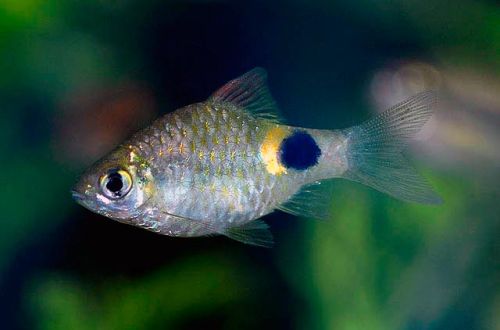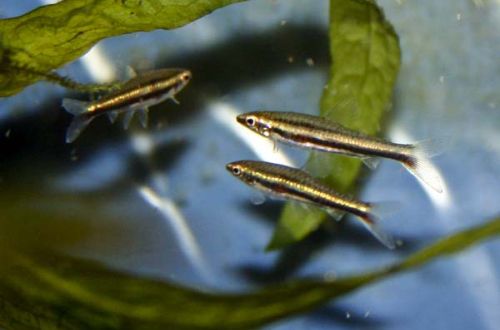
Satanoperka me kokë të mprehtë
Sharp-headed Satanoperka, formerly called Haeckel’s Geophagus, scientific name Satanoperca acuticeps, belongs to the Cichlidae family. The name of this South American cichlid speaks for itself. The fish has a pointed head shape, and this, perhaps, lies its only feature. Otherwise, she is a typical representative of the Satanopyrok and their close relatives, the Geophagus. Relatively easy to keep and compatible with many other freshwater fish species.
Përmbajtje
Vendbanim
It comes from South America from the central Amazon basin in Brazil from Rio Negro to Tapajós (port. Tapajós). Inhabits small tributaries and floodplain sections of rivers with clear or muddy water. The substrates consist of silt and sand, a layer of fallen leaves and numerous snags.
Informacion i shkurtër:
- Vëllimi i akuariumit - nga 600 litra.
- Temperatura – 20-28°C
- Vlera pH - 5.5-7.5
- Fortësia e ujit - 1-10 dGH
- Lloji i nënshtresës - ranore
- Ndriçimi - i ndrydhur
- Ujë i njelmët - nr
- Lëvizja e ujit është e dobët
- Madhësia e peshkut është 14-17 cm.
- Ushqimi - çdo
- Temperamenti - i qetë
- Përmbajtja në një grup prej të paktën 5-8 individësh
Përshkrim

Adults reach a length of 14–17 cm. Males are somewhat larger and have elongated extreme rays of the dorsal and anal fins. The coloration is silvery-beige with rows of horizontal stripes consisting of blue specks. Under certain light, the color appears golden. Fins are reddish. There are three black dots on the body.
Ushqim
An omnivorous species, it feeds both in the water column and at the bottom, sifting small portions of soil with its mouth, in search of small invertebrates. In a home aquarium, it will accept most popular foods of the right size. For example, dry flakes, granules in combination with live or frozen artemia, daphnia, bloodworm pieces. Feed 3-4 times a day.
Mirëmbajtja dhe kujdesi, rregullimi i akuariumit
The optimal size of the aquarium for a group of 5-8 fish starts from 600 liters. This type of cichlid is not picky about decoration and feels great in various environments. However, the sharp-headed Satanoperka will look most harmoniously in an environment reminiscent of its natural habitat. It is recommended to use sandy soil, a few snags in the form of roots and branches of trees. The lighting is subdued. The presence of aquatic plants is not necessary, but if desired, shade-loving varieties, mosses and ferns can be planted.
Experienced aquarists also use the leaves of some trees to give a more natural look. Fallen leaves in the process of decomposition release tannins that color the water brown. Read more in the article “Which tree leaves can be used in an aquarium.”
Successful long-term management depends on maintaining stable water conditions within acceptable temperature and hydrochemical ranges. Accumulation of dangerous concentrations of products of the nitrogen cycle (ammonia, nitrites, nitrates) should not be allowed. The best way to achieve the desired stability is to install a high performance filtration system along with regular aquarium maintenance. The latter includes weekly replacement of part of the water (about 50% of the volume) with fresh water, timely removal of organic waste (feed residues, excrement), equipment maintenance and monitoring of the main water parameters, already mentioned pH and dGH.
Sjellja dhe përputhshmëria
Peaceful calm fish. Only during periods of spawning of Satanoperka can sharp-headed ones become intolerant of other species in an effort to protect their offspring. Otherwise perfectly compatible with most non-aggressive fish of comparable size. Intraspecific relationships are built on a hierarchy, where the dominant role is occupied by alpha males. It is recommended to maintain a group size of at least 5–8 individuals; with a smaller number, weaker individuals will become the subject of persecution by large and strong relatives.
Mbarështimi / mbarështimi
Breeding in home aquaria is possible, although there is very little information on successful cases. But this is due to the low prevalence of this species in home aquariums. Reproduction is typical of other Satanopers. With the onset of the mating season, the alpha male forms a temporary pair with one of the females. The fish dig a small hole, lay several dozen eggs there and cover them with a thin layer of sand. The female stays close to the clutch, while the male stays at a distance, driving away any fish that he considers potentially dangerous. The fry appear after 2-3 days, the female continues to take care of the young, and the male, meanwhile, is taken to courting the new female.
Sëmundjet e peshkut
Shkaku kryesor i sëmundjeve qëndron në kushtet e ndalimit, nëse ato shkojnë përtej kufijve të lejuar, atëherë në mënyrë të pashmangshme ndodh shtypja e imunitetit dhe peshqit bëhen të ndjeshëm ndaj infeksioneve të ndryshme që janë të pashmangshme të pranishme në mjedis. Nëse lindin dyshimet e para se peshku është i sëmurë, hapi i parë është të kontrolloni parametrat e ujit dhe praninë e përqendrimeve të rrezikshme të produkteve të ciklit të azotit. Rivendosja e kushteve normale/të përshtatshme shpesh nxit shërimin. Megjithatë, në disa raste, trajtimi mjekësor është i domosdoshëm. Lexoni më shumë rreth simptomave dhe trajtimeve në seksionin Sëmundjet e Peshkut të Akuariumit.





